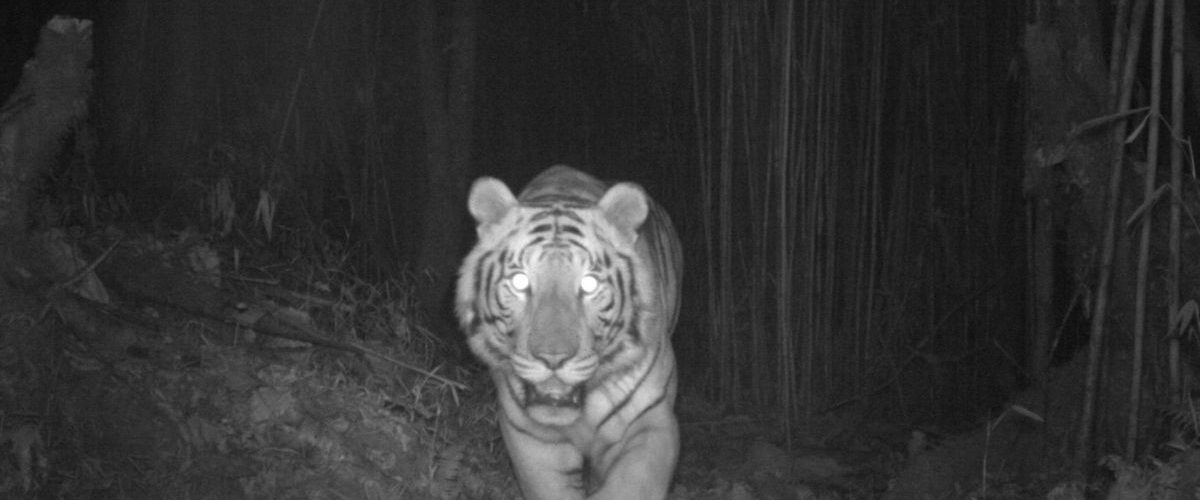
Large carnivores are endangered throughout their range across the globe. Loss of habitat and habitat fragmentation, prey depletion, and direct poaching to feed the illegal wildlife trade are the major causes driving them to near extinction. Although tigers (Panthera tigris) once roamed most Asian landscapes, they are now isolated and restricted to just 7% of their historical range and experiencing a rapid population decline. This warrants a concerted effort by different stakeholders including government agencies, Non-Government Organisations (NGOs), academia, developers, and farming communities to develop a multipronged strategy that could effectively halt further decline of tiger populations in the wild.
Regular monitoring of the tiger population to provide the trend of how tigers are thriving and periodic nationwide tiger count to provide a snapshot of tiger status are of paramount importance for the long-term survival of tigers in the wild. The National Tiger Survey (NTS) 2021–2022 was conducted for the following objectives:
- To determine the current status of tiger populations, including their distribution, abundance, and trends, as a baseline for future monitoring and management.
- To identify the major threats to tiger populations, including poaching, habitat loss, and human-wildlife conflict, and prioritise action to mitigate these threats.
- To assess the country’s commitment to maintaining a stable population of tigers in the wild.
The NTS Report 2021–2022 provides an update of the status of tigers in our country.
The Report is based on extensive data collection using camera traps, field surveys, and data analysis of tiger populations. The key findings of the report are as follows:
- The tiger population in Bhutan has increased from 103 in 2014–2015(NTS-2015) to 131 in 2021–2022 (NTS 2023), which is an increase of 27%.
- The occurrence hotspots for tigers are Royal Manas National Park (RMNP), Jigme Singye Wangchuck National Park(JSWNP), Phibsoo Wildlife Sanctuary (PWS), Jigme Dorji National Park (JDNP), Bumthang, Dagana and Zhemgang Divisions with tiger density of more than two individuals per 100 km2.
- The overall density of tigers in Bhutan for the whole country with an effective sampling area of 32,800 km2 is 0.23 tigers per 100 km2 with an average home range of 155 km2 for female tigers and 498 km2 for male tigers.
We invite all the nature conservation enthusiasts and interested to join us in the important event “A Call to Action: Revealing the Tiger Survey Report and Inspiring Change for Tiger Conservation”

